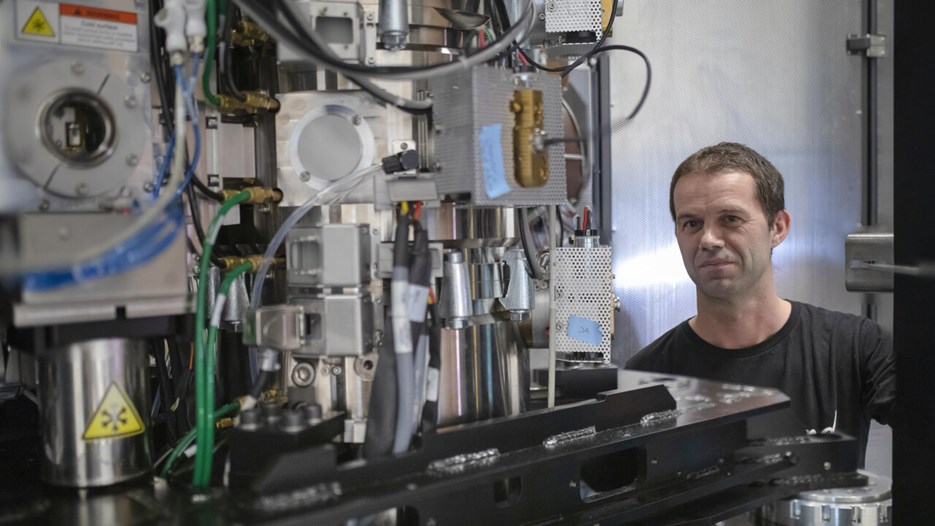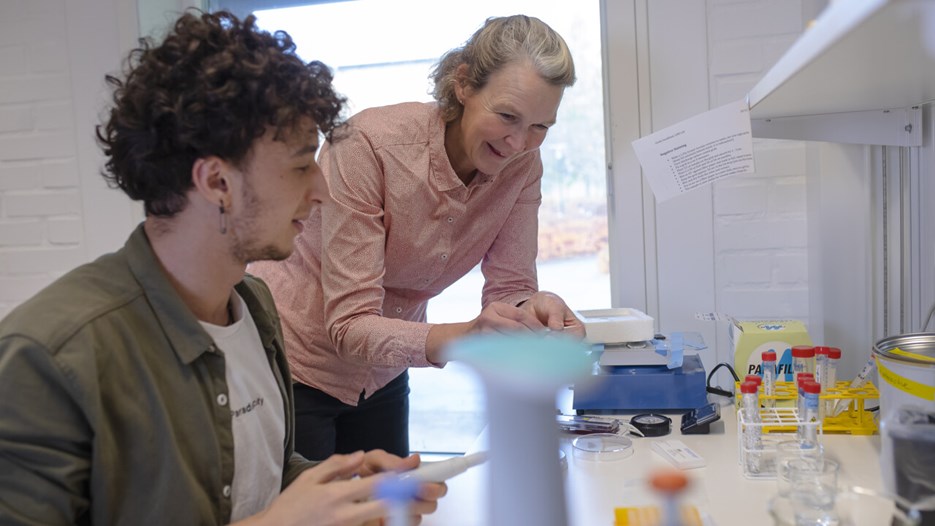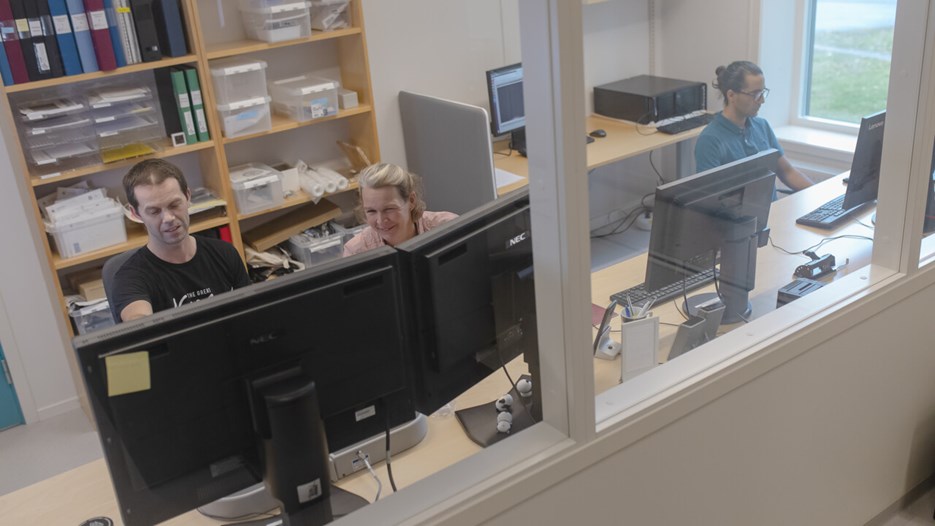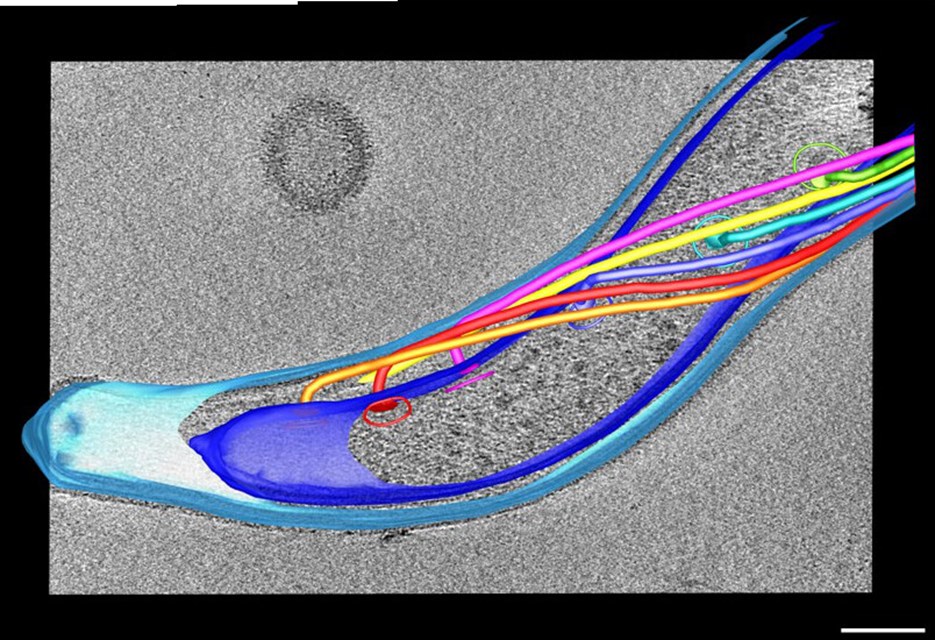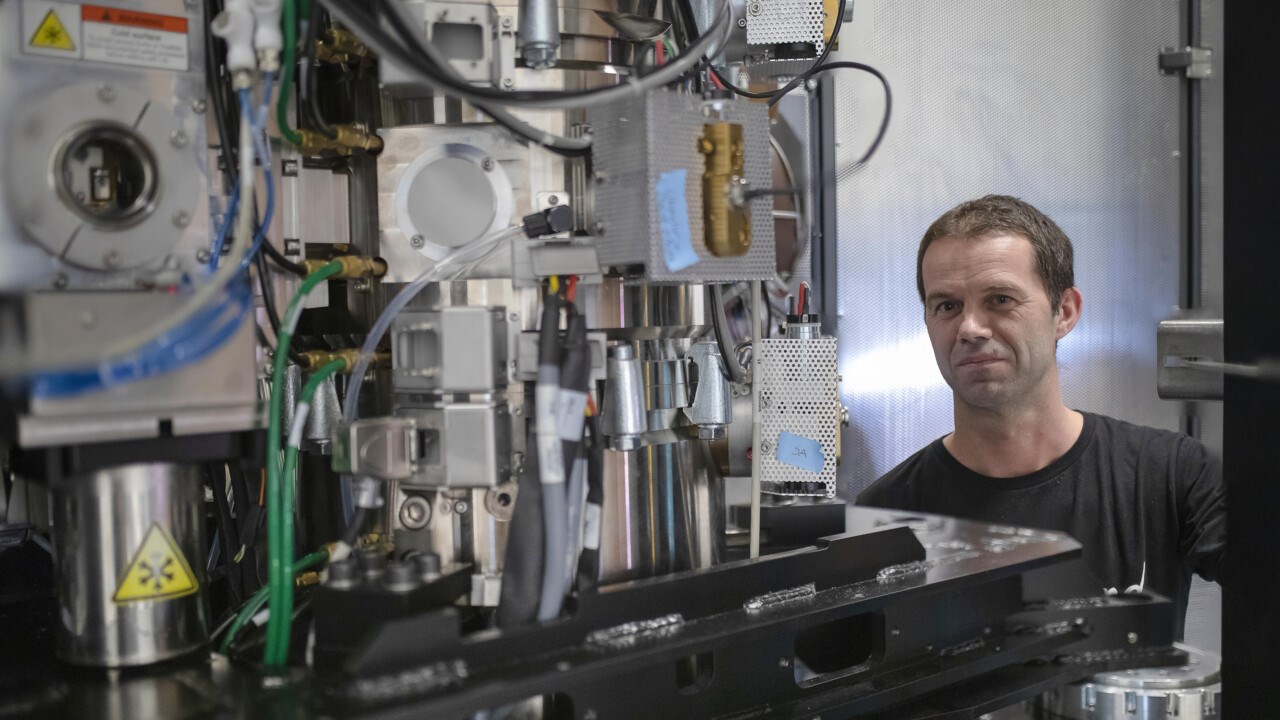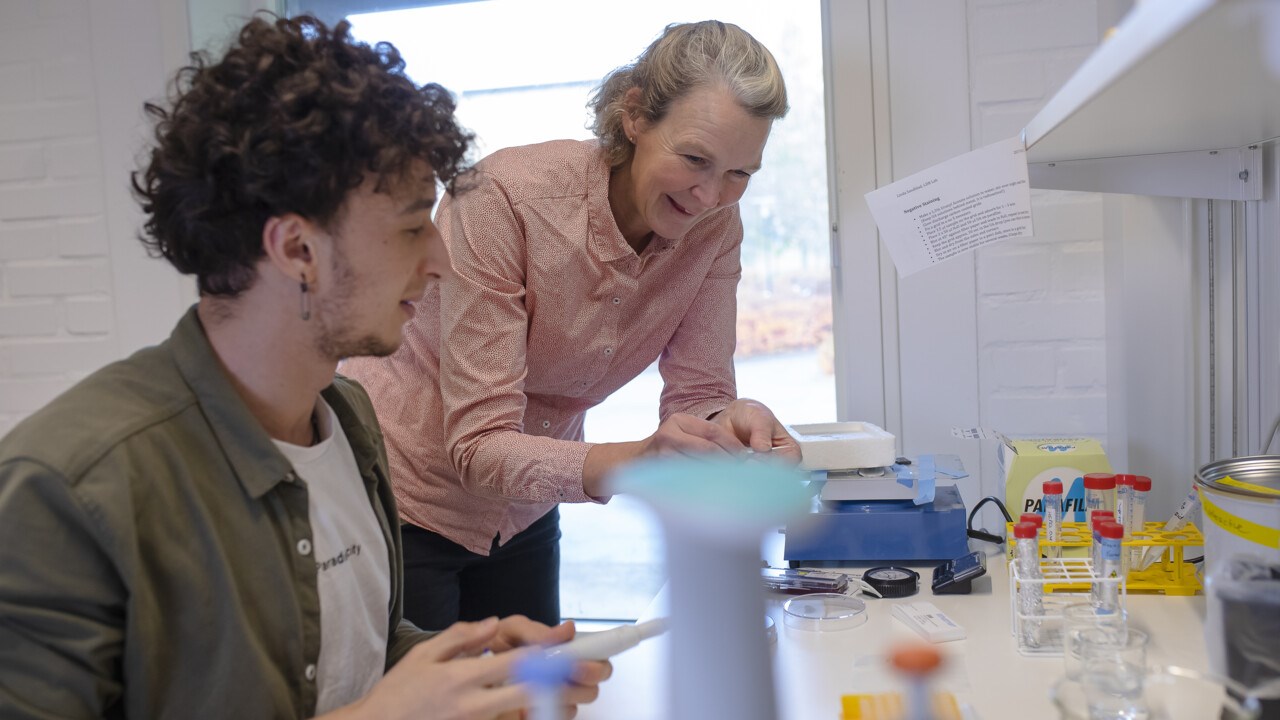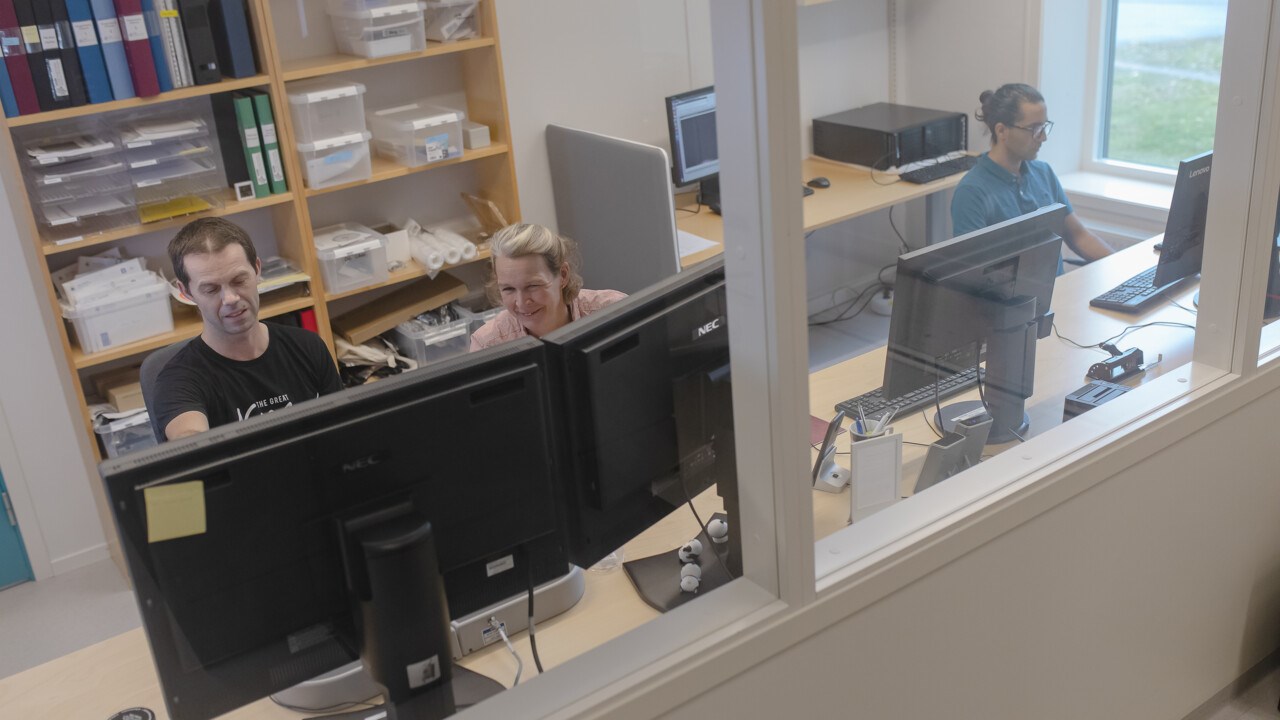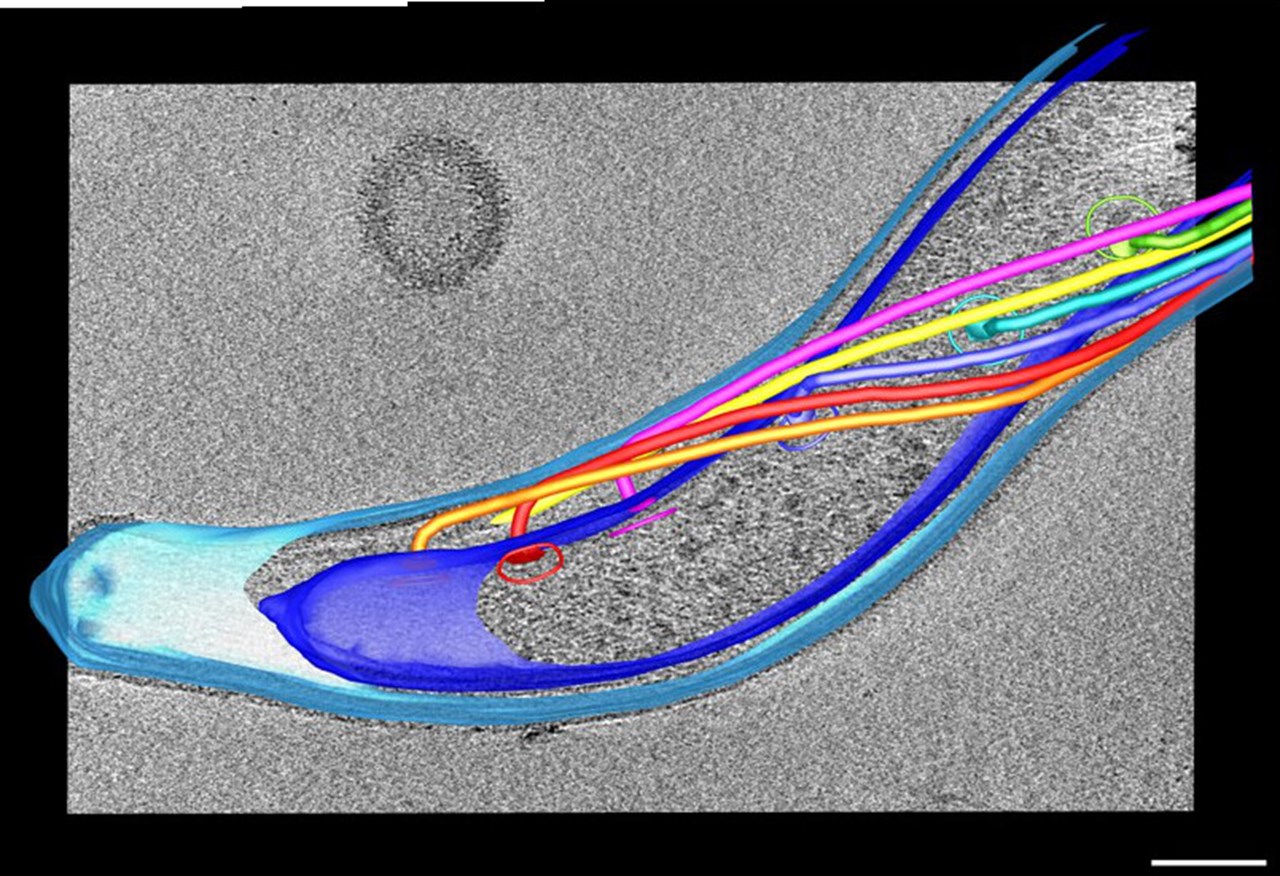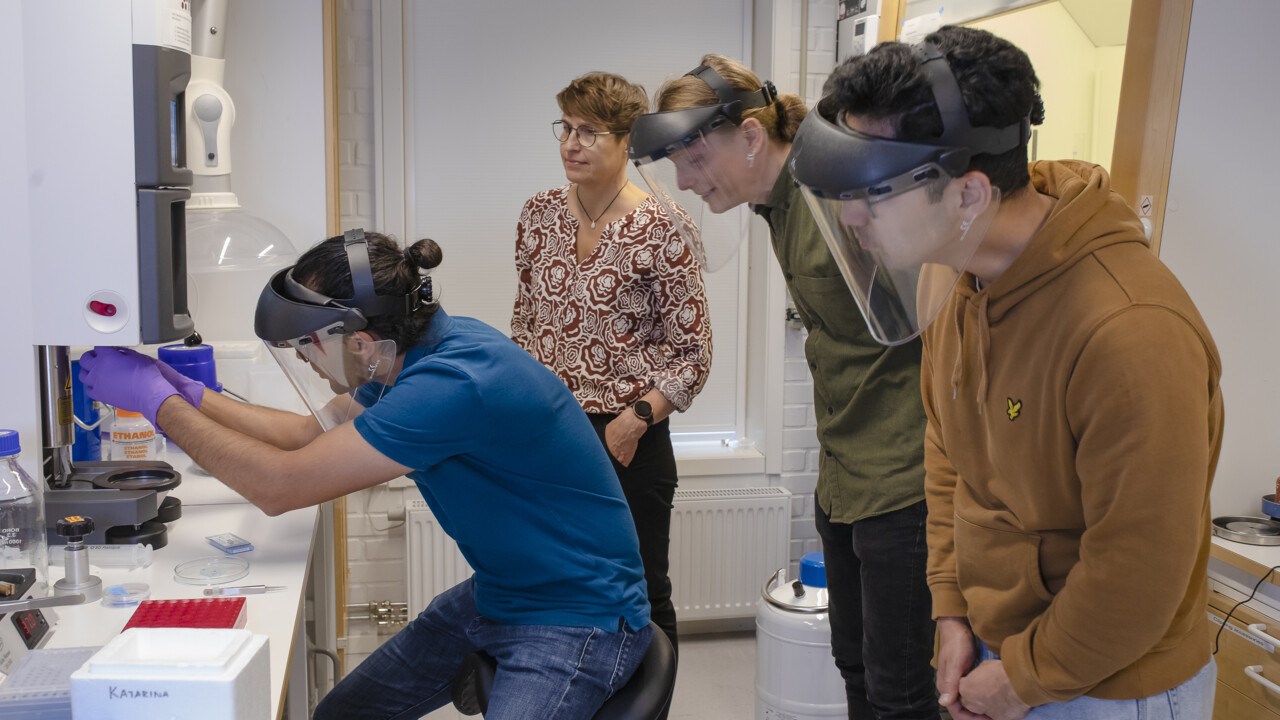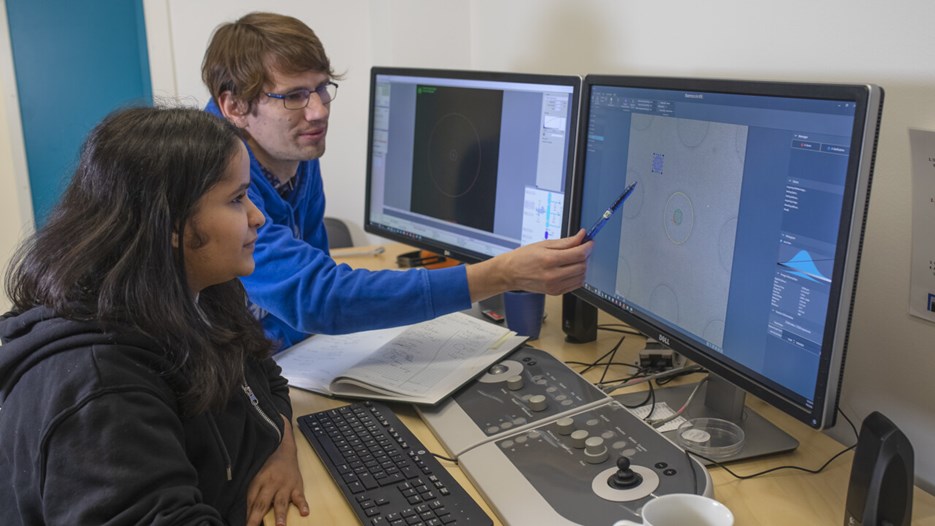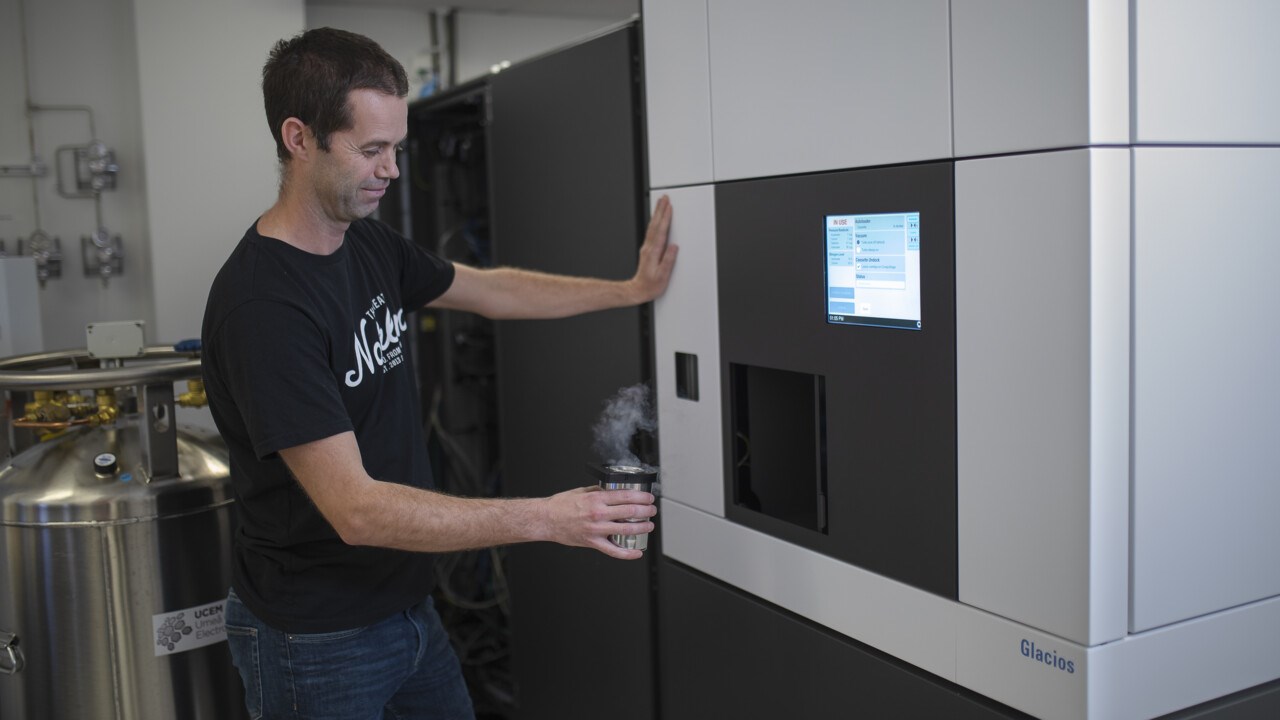FACTS How cryoelectron microscopy works
The method involves rapidly freezing biomolecules and thus capturing them in mid-motion.
First, a very thin film of the biological material to be studied is created on a fine-mesh metal grid. The sample is then flash-frozen to minus 190 degrees and placed in the cryo-electron microscope. An electron gun shoots electrons that travel through a magnetic column, producing the magnification.
At the other end of the microscope is a detector that reads the electrons that have passed through the frozen biological sample, and saves the image. Image processing requires powerful computers and makes it possible to display 3D images of the biological material.
Pictured: Kasturika Shankar and Jan Silhán are starting a data collection at Glacios.



